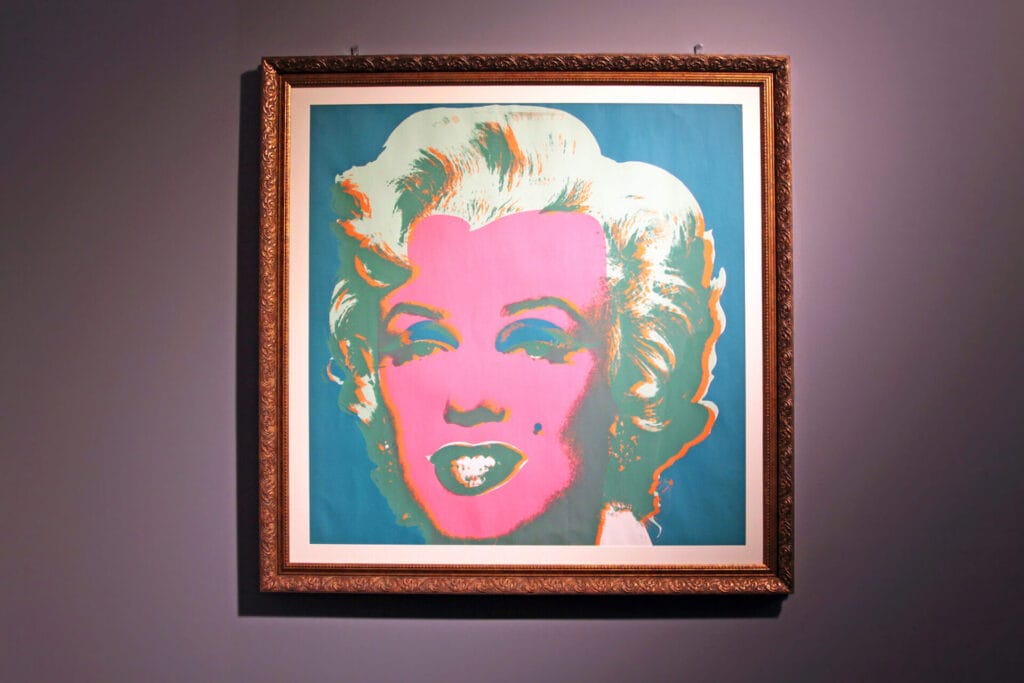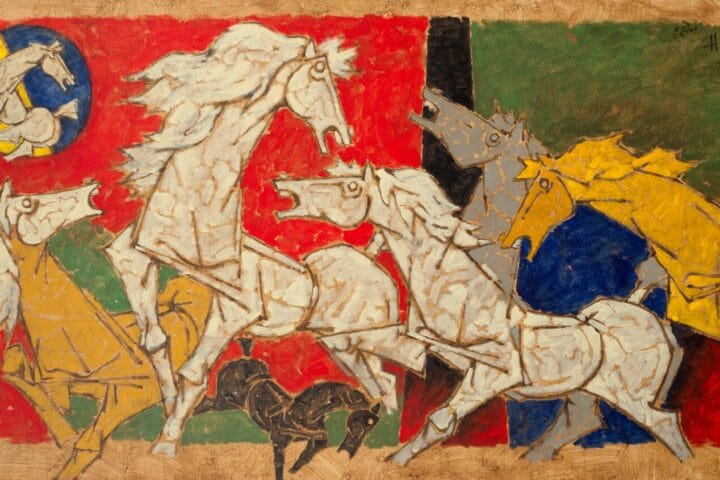Welcome to a world of artistic creativity – the world of Andy Warhol.
Andy Warhol was an artist who revolutionized the art world with his iconic and often provocative pop art. With his bold strokes and vivid colors, he captured the zeitgeist of the 1960s and 1970s, creating works that are still relevant today. Warhol’s career spanned decades and included everything from painting, printmaking, photomontage and sculpture to filmmaking, writing, and performance art.
No other artist has been able to capture the spirit of our times as effectively as Warhol did. In this guide, we’ll journey through Warhol’s life and explore his revolutionary artwork. We’ll also examine how his works have influenced modern art and popular culture as a whole. Together, let’s delve into the incredible mind of Andy Warhol – a true cultural icon.

Who Was Andy Warhol?
Andy Warhol was an American artist and director, who is often credited with being the leader of the Pop Art movement in the 1960s. Emerging from Pittsburgh and then heading to New York City, Warhol’s unique blend of photography and painting won him instant fame for his iconic works like Campbell’s Soup Cans (1962), Marilyn Diptych (1962), and Brillo Boxes (1964).
His fame has endured in part because of his experimental artworks, but he is also credited with pioneering new ways of selling art. He embraced mass production through screen printing, selling out series like The Thirteen Most Wanted Men (1964). He also organized events like The Silver Factory in 1965, where he collaborated with writers, photographers, filmmakers, and more to create a creative hub.
At the same time Warhol was pushing boundaries in his artwork, he became an unexpected icon in popular culture. His avant garde look—from his signature silver wig to his oversized glasses—made him instantly recognizable and inspired people to dress up in classic “Warhol-style.”
Andy Warhol’s Early Life and Artwork
Andy Warhol was born in the city of Pittsburgh in 1928 and was raised Roman Catholic in a working-class family. He attended the Carnegie Institute of Technology (now Carnegie Mellon University), where he majored in pictorial design and graduated with honors in 1949.
By the mid-1950s, Warhol had made a name for himself as a commercial illustrator, having created popular advertisements for clients like I. Miller Shoes, Tiffany & Co., and Bonwit Teller. His illustrations of shoes were showcased at the Museum of Modern Art in New York City, bringing him further notoriety as an artist—the first step toward the pop art movement he would eventually spearhead.
Throughout the late 1950s and 1960s, Warhol explored his iconic media of printmaking, painting and sculpting: he completed numerous silk screens; painted everyday items like Coca-Cola bottles and Campbell’s Soup cans; produced several large-scale works; and even made experimental films. This period marked his departure from traditional esthetic techniques—a bold step forward to revolutionize the art world forever.

Warhol’s Creative Influence on Pop Art
Born in Pittsburgh, Pennsylvania in 1928, Andy Warhol was a revolutionary artist and icon who made an impact on the art world that is still felt today. His influence on the Pop Art movement changed the way the world looked at art, and his innovative approach to painting, photography and film-making has been highly influential in shaping modern art.
Warhol’s creative career was both extensive and diverse, and he drew inspiration from a variety of sources. He was renowned for his bold use of color, which he used to create dynamic images that capture viewers’ attention. His work often featured bold subject matter as well – celebrities, everyday items, comic strips – that resonated with audiences around the world.
Throughout his life Warhol sought to blur the lines between art and commercialism by challenging accepted conventions and pushing boundaries with his work. He kept current with emerging trends in popular culture, often incorporating them into his pieces to create unique works of art that continue to make a mark today.
He often used repetition in his work as well – a technique that gave viewers an insight into Warhol’s fascination with popular culture — and provided them with a deeper understanding of what it meant to be living during such an important period in history. Warhol’s revolutionary approach to Pop Art continues to inspire artists around the world today.
The Rise and Popularity of Pop Art in the 1960s–1970s
The 1960s and 1970s were a time of great cultural upheaval, and artists were at the center of that change. One of the most influential artistic movements in this era was Pop Art. Led by names like Larry Rivers, Roy Lichtenstein, and perhaps most notably, Andy Warhol, pop art reignited an appreciation for mundane everyday subjects – like Coca-Cola bottles or comic book characters – that had formerly been overlooked.
Andy Warhol was an important figure in the pop art movement as he understood how to make unconventional works of art more accessible to a wider audience. He was also able to bridge highbrow and lowbrow art styles, showcasing his works in both galleries and supermarkets alike. His vibrant silkscreen prints helped to elevate pop art from its previous status as a form of commercialized art to something worthy of being appreciated for its own merits.
The lasting appeal of Warhol’s work is in its combination of bold colors and familiar images: everything from Coca-Cola cans to Campbell’s Soup tins have been brought back into the public imagination through his iconic works. Although originally intended as a commentary on consumerism in American culture, Warhol’s pieces have instead become staples in modern design and reminders of many people’s childhoods.

Warhol’s Legendary Studio, the Factory
The legendary Factory is synonymous with the legendary artist. The Factory was Andy Warhol’s studio where he and his colleagues explored the boundaries of creativity. It was a place where anyone could create, collaborate, or just “hang out.”
The Factory was crucial to Warhol’s professional success. It housed all the tools he needed to create some of his greatest works–paint, film, music and photography equipment–allowing Warhol to explore multiple art forms simultaneously and make connections with other creatives in the industry.
The space was also a destination for celebrities of the time, including Lou Reed, John Lennon, Mick Jagger and Bob Dylan. Warhol’s art was always influenced by current trends and popular culture which gave him insight from these influential minds which helped form his unique style of work.
The Factory acted as an epicenter for creative exploration without boundaries or restrictions – a place for Warhol to experiment with new ideas and produce some of his most iconic pieces such as Campbell’s Soup Cans, Marilyn Monroe prints and Green Coca-Cola Bottles.
Warhol’s Legacy in Contemporary Art
Today, Andy Warhol is widely celebrated as a revolutionary artist and icon. His works have influenced countless other artists and can be seen in galleries and museums all over the world. But more than that, Warhol’s legacy lives on through the way he revolutionized contemporary art.
Here are some of the ways Warhol’s presence is still felt in modern art:
- He blurred the lines between “high” and “low” culture with works like his Soup Cans series, which celebrated everyday objects in a new way.
- He helped to create a bridge between fine art and popular culture with his use of mundane imagery, film, music and pop-art.
- He pioneered the concept of “celebrity artist” by elevating celebrity culture to art and collaborating with well-known personalities such as Jean-Michel Basquiat, Debbie Harry, Lou Reed, and Mick Jagger.
- Warhol’s method of mass production explored the possibilities of consumerism by creating multiple prints of single artwork.
- His use of bright colors and bold patterns remain iconic in both the art world and fashion world today.
Warhol’s influence on modern day art continues even after his passing; from his impact on contemporary photography to his influence on street art across urban culture – we’re still learning what more this groundbreaking artist has to offer us.
Andy Warhol’s creative artwork and expressive genius has had an undeniable influence on the art world. Warhol challenged the notion of what is considered art, and established himself as an icon and revolutionary artist. His work has been admired and emulated for decades, and will continue to inspire generations to come. Warhol’s unique combination of new media, pop culture references, and bold silhouettes has forever changed the way we think of art, and his legacy will remain for years to come.
If you want to know more about his life and personality, don’t miss The Andy Warhol Diaries (2022).
You need to let the little things that would ordinarily bore you suddenly thrill you.
Andy Warhol
Video: Brief History of Andy Warhol: Pop Art King
I am a deeply superficial person.
Andy Warhol















